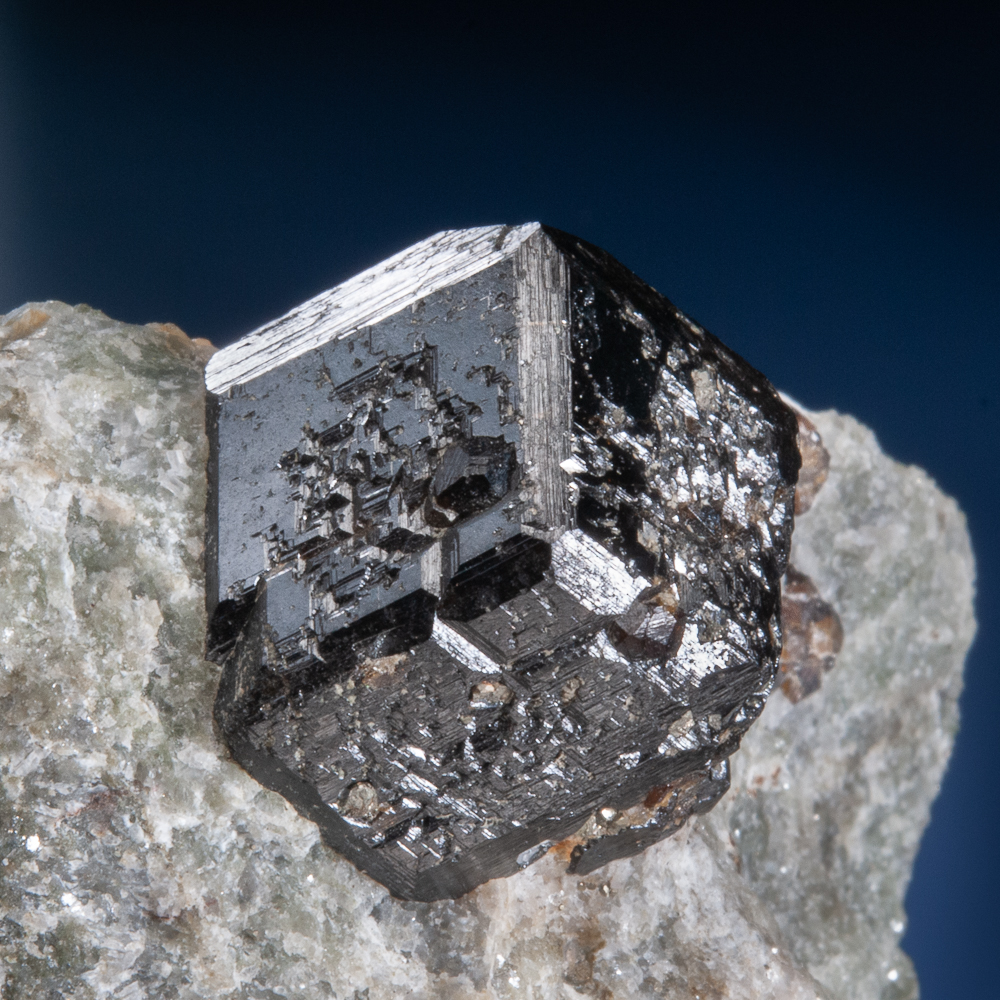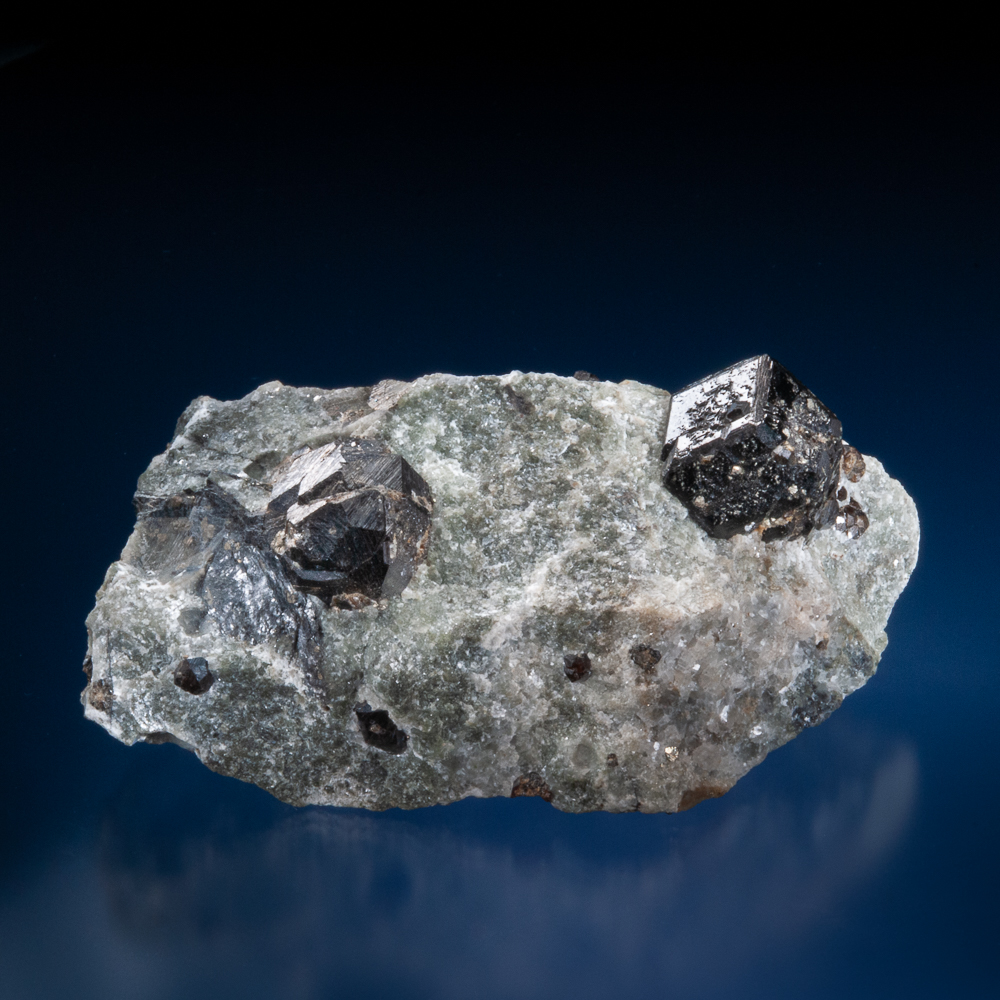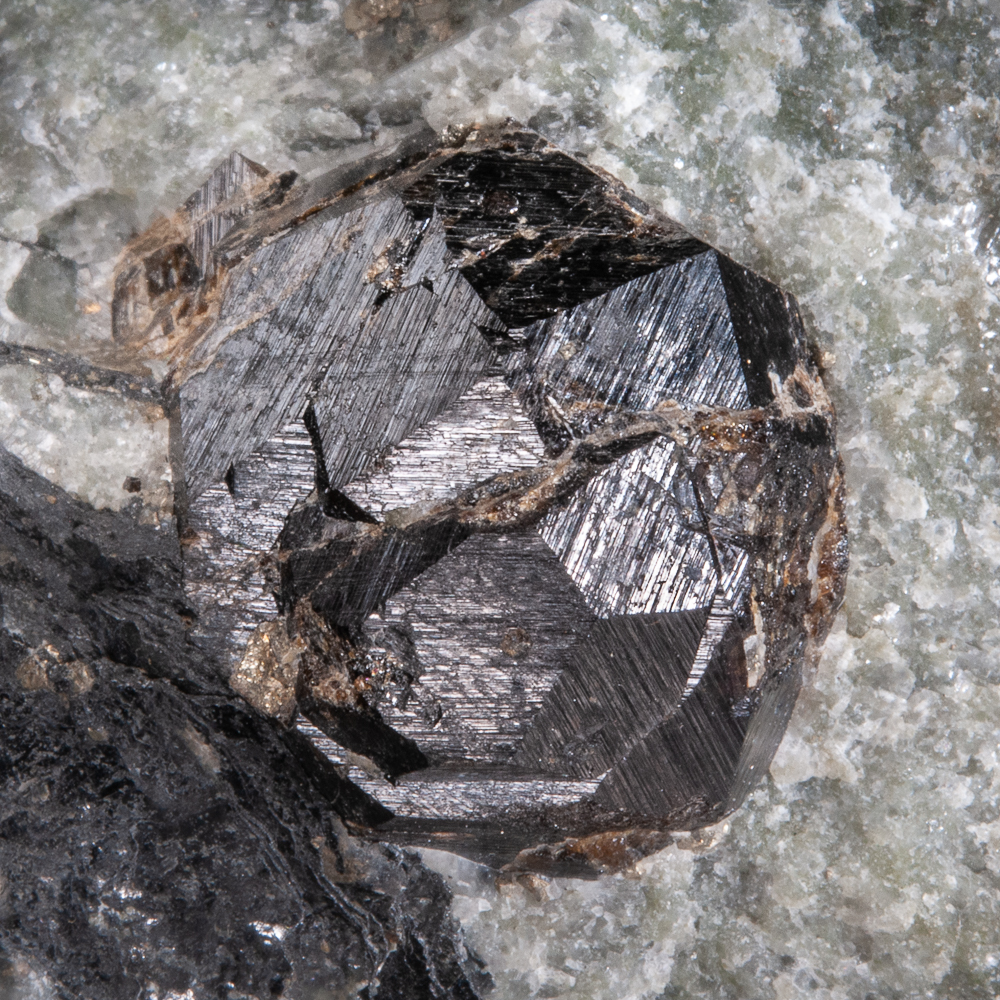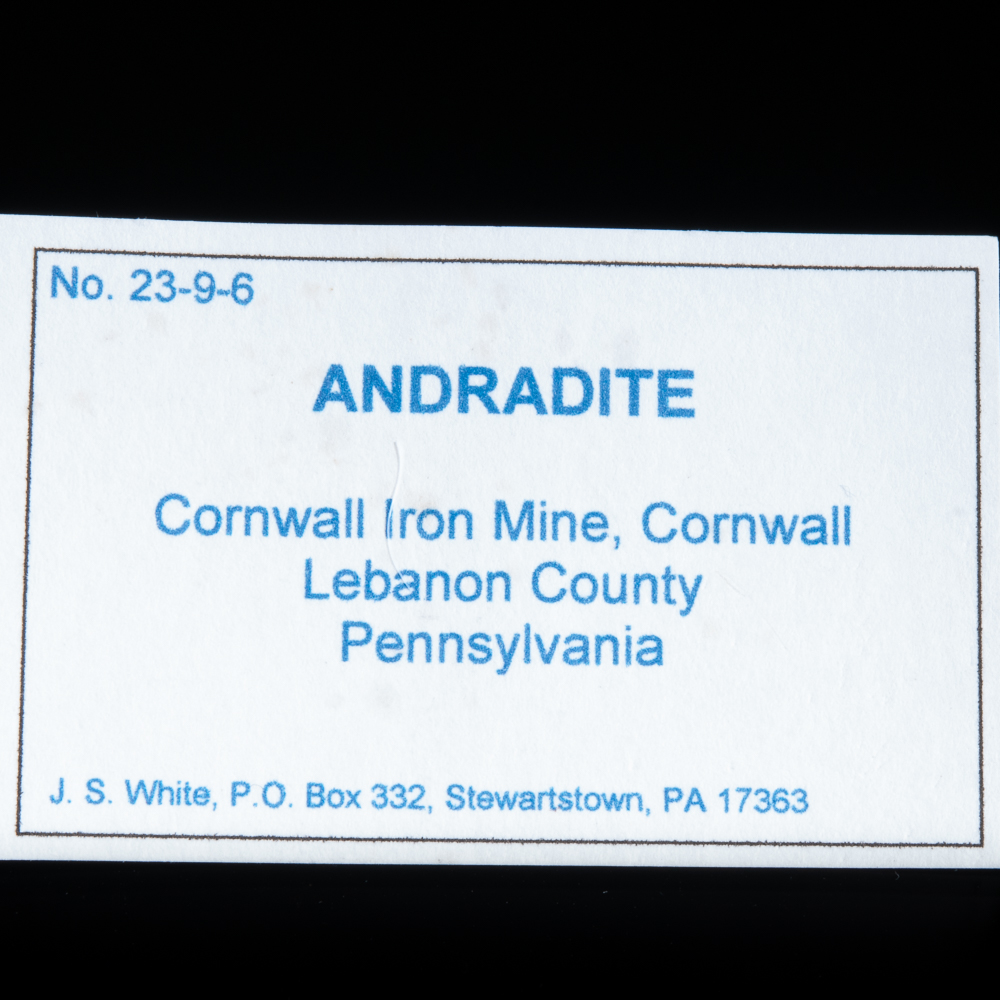Description
Detailed Description
This piece features two main andradite crystals (up to 2.4 cm) from the classic Cornwall Iron Mine. One crystal is predominantly dodecahedral, with small trapezohedral modification faces. The other crystal is a parallel-growth composite exhibiting only trapezohedral forms. Even more fascinating is that upon examination with magnification, the dodecahedral crystal has trapezohedral crystals, and an unmodified dodecahedron perched on it. (Why does this happen? No idea, but so cool!) The crystals are sharp, with striations and surface growth patterns. There are many smaller sharp crystals all over the specimen, on all sides – the smaller crystals exhibit a colour range from red and golden brown to black. In excellent condition, the smaller of the two main crystals has minor chips. Stands or sits perfectly for display either horizontally or vertically and looks great both ways. A great garnet from the John S. White Pennsylvania Collection!
About the Cornwall Iron Mine
The Cornwall Iron Mine began in 1732 and, after operating continuously for over 230 years, it is regarded as one of the great historic mines of the American Northeast. Iron from Cornwall supplied efforts in the Revolutionary War and, over the history of the mine, more than 106 million tons of iron ore were produced. The Cornwall Iron Mine complex also produced gold, silver, copper and cobalt during the life of the mine. In 1972, Tropical Storm (originally Hurricane) Agnes caused the remaining mining operations to flood beyond commercial recovery, and the Cornwall Iron Mine closed in June 1973. Mineralogically it is an important locality, with over 60 mineral species known from the deposit.






